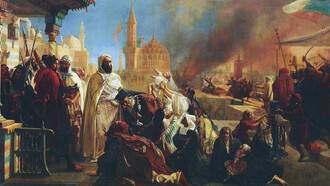A single photo can express feelings, expose reality, or tell stories in a way that is difficult for words to do. This is the essence of photojournalism, an art form that transcends simple photography to document life, bring awareness, and give a voice to those who might otherwise remain unheard. Today's intensely digital world of image-heavy communication makes photojournalism all the more important in informing about the world around us and motivating action.
Photojournalism is not just about aesthetics; it is a profession that also informs, connects, and challenges. It can make faraway places more accessible, humanize abstract problems, and have the powerful effect of making the powerful accountable for their abuses of it. This article explores why photojournalism remains crucial, how it shapes our perception of the world, and the unique challenges faced by photojournalists.
The power of visual storytelling
At its heart, photojournalism is about storytelling. Any photo taken by a photojournalist is a story, a triumph, a tragedy, a testament to resilience, or a symbol of change. One picture is worth one thousand words. It brings people to events and experiences that would otherwise seem remote or intangible.
In recent years photographs coming out of the Gaza conflict have also produced a deep resonance. Heartbreaking images of displaced families, children with playthings in heaps of rubble, and mourners searching for their dead have been shared across the world. These images overcome linguistic gaps and ethnic barriers (culture) by exposing the suffering that war causes to humankind. They engender feelings, generate thoughts, and have an enduring impact that words are unlikely to produce.
Not only does a well-composed image capture a moment, but it also invites the viewer to see the world from the perspective of another. It forms a permeability between the subject and the spectator, promoting identification and comprehension.
Why photojournalism matters
Photojournalism serves as a window to the world. It informs us about global events, shines a light on hidden realities, and ensures that history is documented for future generations. Yet, in addition to its informational purpose, photojournalism is powerful for attracting and mobilizing a mass audience.
Raising awareness
The power of photojournalism is to give a voice to issues that would otherwise exist in obscurity. From humanitarian disasters to environmental breakdowns, photojournalists will venture to the epicenter of the trouble to photograph realities that need to be noticed. Their work also calls attention to injustice, inequality, and suffering, something that inspires viewers to see or think differently.
Eg, In the case of natural disasters or armed conflicts, photojournalists are the first to reach the scene. Their images capture the urgency of the situation, inspiring relief efforts and international aid.
Humanizing issues
Statistics and reports, however, find it difficult to translate the human cost of global phenomena. Photojournalism addresses this gap by documenting people and recording moments of joy, pain, resilience, and positivity. A picture of a refugee family leaving their country, a laborer under extreme situations, or even a child with a graceful smile on the face of suffering has one single narrative.
When photojournalists bring to life the human aspects of global affairs, it naturally helps people feel emotionally linked to a story they might otherwise ignore.
Documenting history
A visual archive of life as it happens Photojournalism. It freezes things in place and gives us a record of events that define our world. Photojournalists bear witness to history, documenting events, from protests to pandemics, so that the events will be known for posterity by the next generation.
If photojournalism did not exist, there would be many of the most pivotal moments of our era lost to history. The images captured today will serve as reminders of both our triumphs and failures, ensuring that history is not forgotten.
The emotional impact of photography
The power of photojournalism to create an emotional response is one of its most important superpowers. An effective photograph can give the viewer some anger, grief, joy, or hope. It may provoke a feeling of urgency and motivate individuals to act.
Examples of the above include photographs of humanitarian catastrophes, which have also been instrumental in motivating donations, advocacy, and policy reforms. Images taken from war zones, refugee camps, or disaster areas occupy the living rooms of people around the world, exposing their harsh realities.
This emotional connection is what makes photojournalism so impactful. Photographs communicate directly to the soul, in contrast with the interpretive nature of text.
The challenges faced by photojournalists
Being a photojournalist is not an easy profession. It demands courage, resilience, and a strong sense of duty. Photojournalists frequently operate in hazardous/uncontrolled environments, overcoming a variety of hurdles throughout the process.
Safety risks
Photojournalists often operate in high-risk areas such as conflict zones, natural disaster sites, or politically unstable regions. They also expose their own lives to risk in order to tell the stories that need to be told. A great number of people are exposed to harm, injury, or worse as they attempt to get to the truth.
Ethical dilemmas
Photojournalists must navigate complex ethical questions. How do they actually capture intimate moments without placing undue burdens on their subjects? How can they document suffering or injustice without sensationalizing it? The tension between wanting to tell a story and making sure the people involved are treated with dignity is what I'm facing every day.
Financial uncertainty
In the age of social media and smartphones, where images are abundant, professional photojournalists often struggle to make a living. Media organizations, especially freelance photographers, suffer from financial insecurity, since as cost-saving measures are in the first place, that quality journalism ends up being a secondary consideration.
However, in spite of these obstacles, photojournalists continue to believe in their work and are dedicated to it because of the conviction that they can make a change.
The ethical responsibility of photojournalism
With great power comes great responsibility. Photojournalists have the ability of visual storytelling, and this ability carries the responsibility to ensure ethical practice.
Honesty and authenticity: photojournalists must prioritize truth. Their pictures should be realistic, unmanipulated, and undistorted. This earnestness guarantees that their work is an honest medium of information.
Respect for subjects: capturing sensitive or vulnerable moments requires sensitivity. Photojournalists have to be mindful of the dignity of their subjects to avoid activities that may exploit or harm them.
Avoiding sensationalism: although powerful pictures capture the eye, photojournalists have the responsibility to not exploit the very people they are photographing. Their efforts should be directed toward providing information and inspiration instead of just shocking people.
The future of photojournalism
Photojournalism is still developing in line with technological innovations and the dynamics of the media landscape.
New tools and techniques: drones, smartphones, and virtual reality are changing photojournalism's process of getting and presenting stories. These technologies provide novel insights and capabilities for rich storytelling.
Social media platforms: social media has been instrumental in democratizing photojournalism so any person with a camera can now announce images of that event to the world. Although media volume has expanded visually, it has also sparked concerns about professionalism, authenticity, and practices and standards.
The role of AI: photojournalism is increasingly being represented by artificial intelligence, in terms of photo editing software, or content distribution. Although this is promising, it also has the specter of abuse or exploitation.
However, the fundamentals of photojournalism are still the same, even with these changes. It is still about telling stories that matter and using images to connect people to the world around them.
Why photojournalism still matters today
In a climate of rampant misinformation, photojournalism provides the essential weapon for truth. Photography provides unquestionable proof on the retina, confronting falsehoods and chastising authority.
Beyond combating misinformation, photojournalism inspires empathy and action. It is a reminder of human nature itself, and thus makes us consider the world from the perspective of other people and gives us the responsibility to build a better tomorrow.
Conclusion: the lens that shapes our world
Photojournalism is a lot more than just taking photos; it is a masterful way of storytelling that events the lens and interpretation of the world. Photojournalists not only record points of truth; they also provide us a glimpse into places and experiences we may otherwise not see.
Their research not only informs but also inspires and perturbs us to view ourselves and the world differently. It draws us to the elegance and richness of the human condition and calls to action against injustice or a need.
So long as a narrative still has to be told, photojournalism will continue to be an integral part of our global community. It is a lens through which we see life’s triumphs, tragedies, and everything in between, helping us to connect, reflect, and grow.















